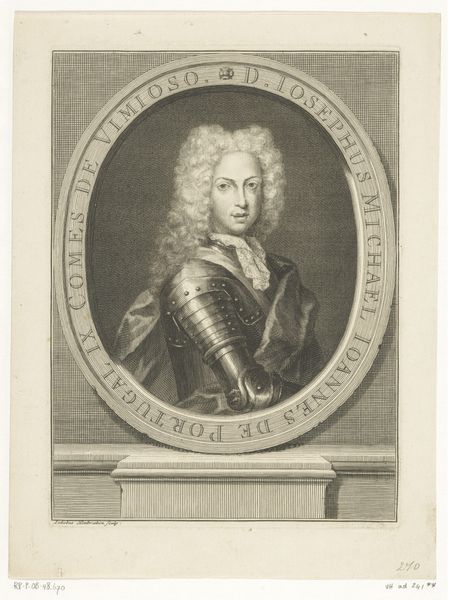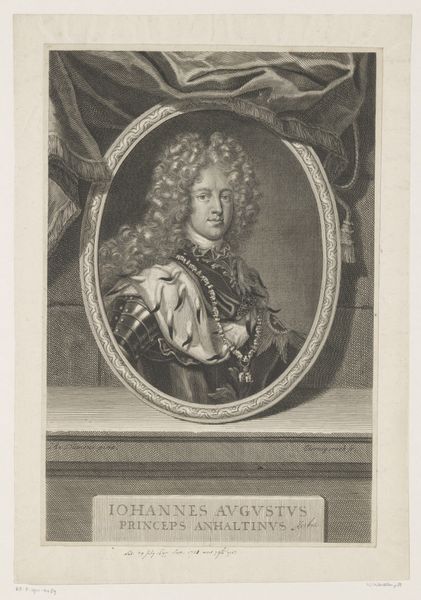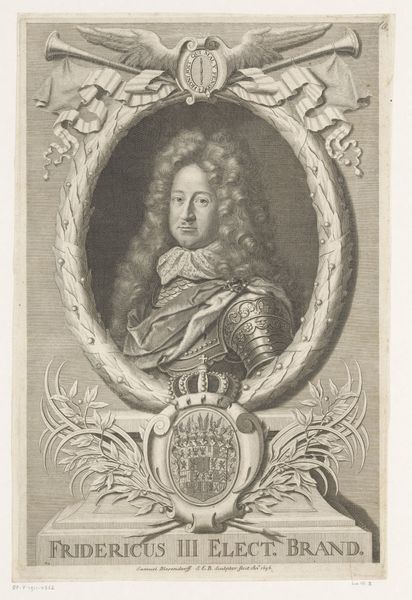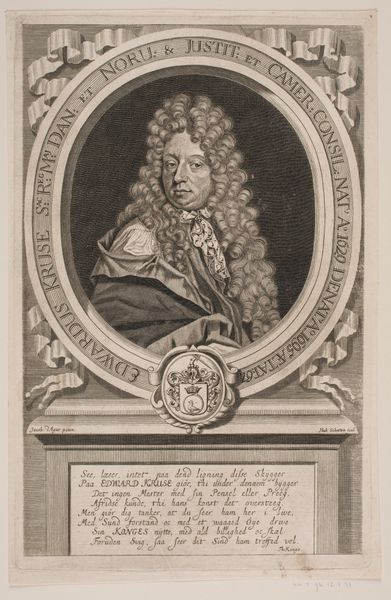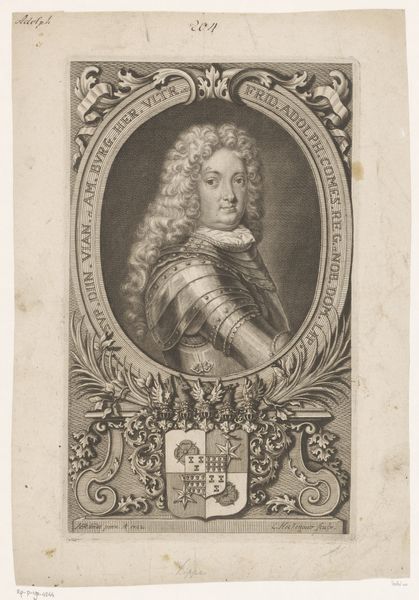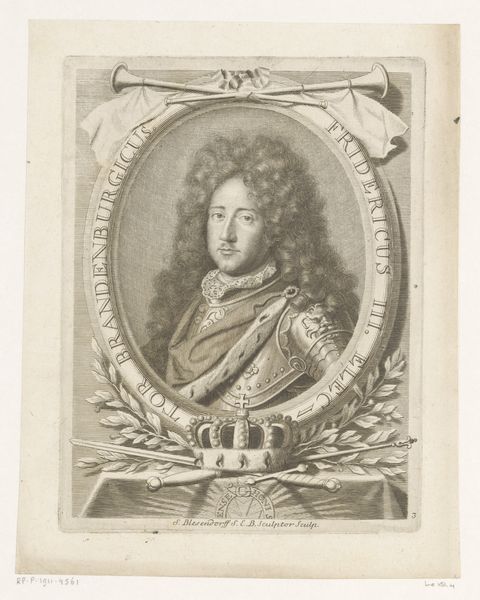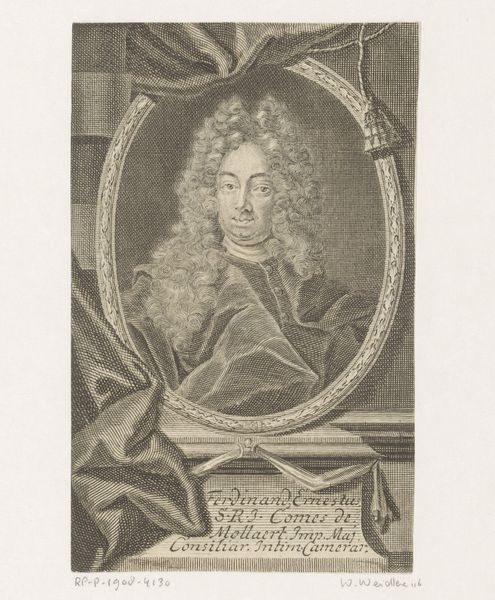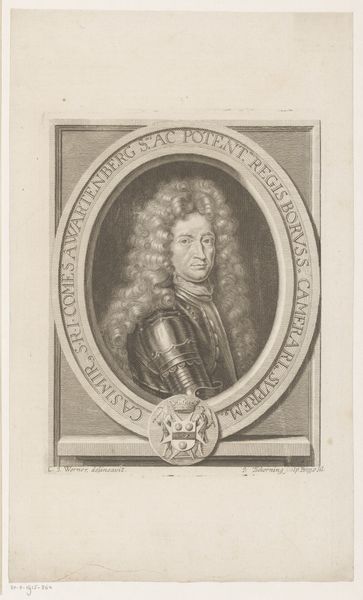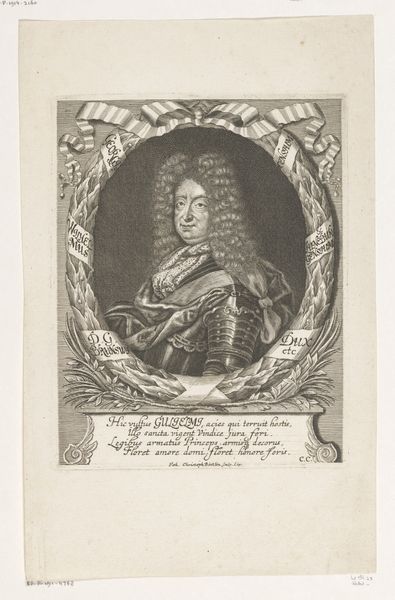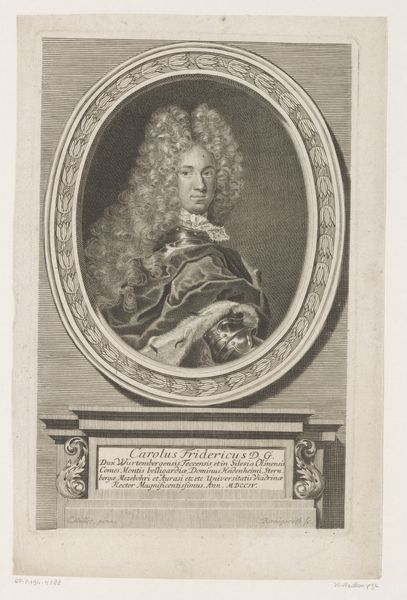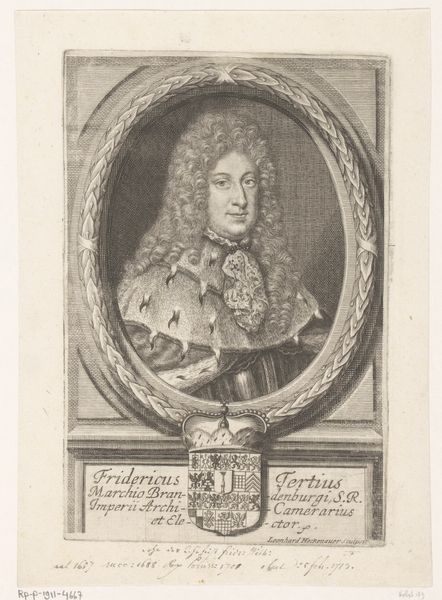
engraving
#
baroque
#
engraving
Dimensions: height 270 mm, width 177 mm
Copyright: Rijks Museum: Open Domain
Editor: This is a portrait of Christian Ulrich II von Württemberg-Oels, made in 1707 by Martin Bernigeroth, using engraving. The detail is amazing! But what strikes me most is how he’s presented, almost like a Roman emperor but with that enormous Baroque wig. What symbols are at play here? Curator: Precisely! Look closely: Bernigeroth employs several visual cues that tie Christian Ulrich to both ancient Roman power and his contemporary standing. Consider the armor—a symbol of military prowess harkening back to antiquity, yes, but juxtaposed with the fur-lined cloak. What does that suggest to you? Editor: Luxury and status? It feels like the artist is balancing his military image with signs of wealth and nobility. Curator: Indeed. The text below adds another layer. Being "Rector Magnificientissimus" suggests that in addition to titles of nobility, Christian was a patron of arts and culture, implying the transfer of military power to knowledge power. Do you see any potential tension there? Editor: Definitely. It is a statement about inherited power but also individual accomplishments, creating a dialogue between legacy and identity. He has agency. Curator: Exactly! By understanding how different elements symbolize Christian Ulrich’s position in society, we unlock a richer comprehension of Baroque values. Images like this reveal that the symbols accumulate across different cultures and eras, revealing how power is perceived across different communities. Editor: I see how the image functions not just as a portrait but also as a symbol of Baroque-era power and authority, and the cultural inheritance that follows power. I’ll certainly be thinking about this duality in future encounters with art.
Comments
No comments
Be the first to comment and join the conversation on the ultimate creative platform.
